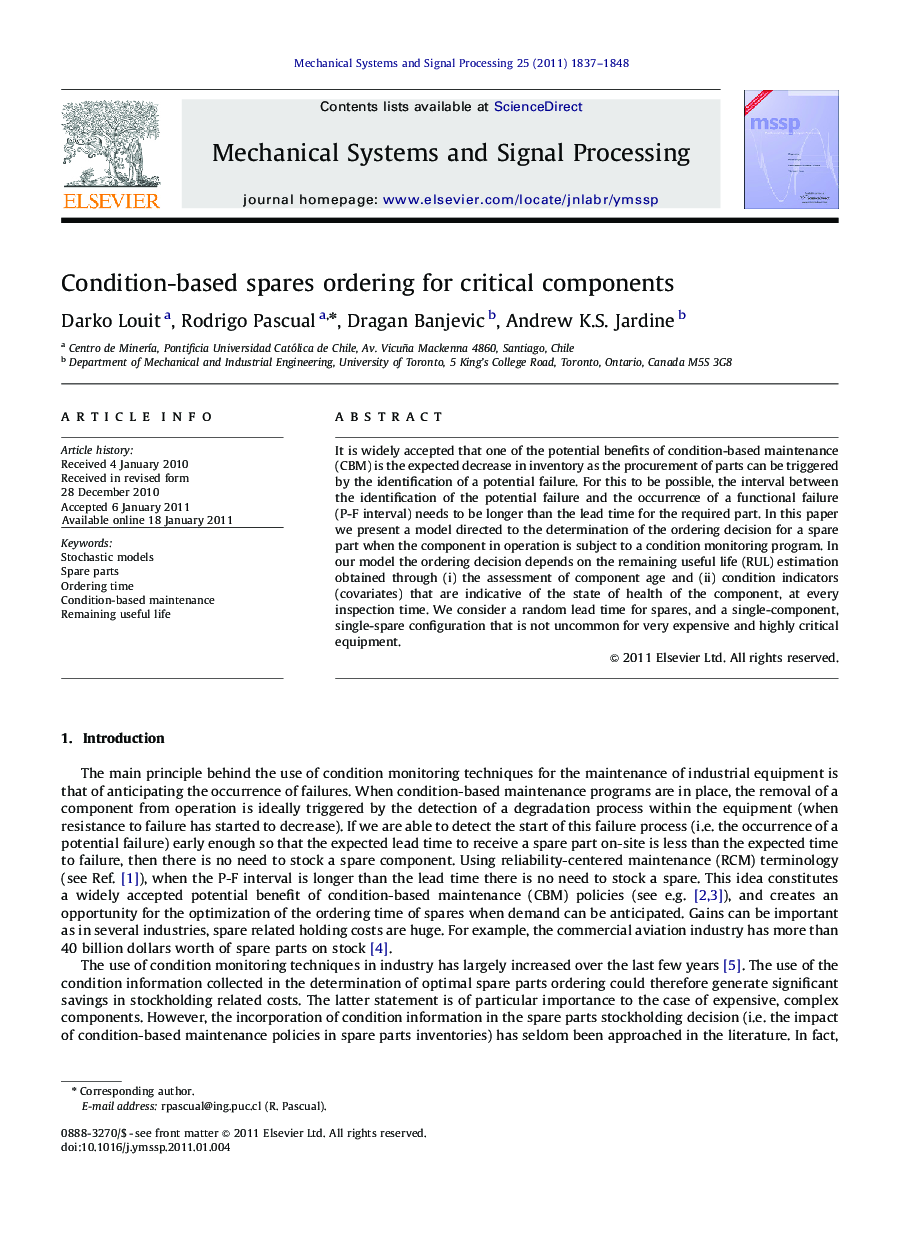| Article ID | Journal | Published Year | Pages | File Type |
|---|---|---|---|---|
| 559667 | Mechanical Systems and Signal Processing | 2011 | 12 Pages |
It is widely accepted that one of the potential benefits of condition-based maintenance (CBM) is the expected decrease in inventory as the procurement of parts can be triggered by the identification of a potential failure. For this to be possible, the interval between the identification of the potential failure and the occurrence of a functional failure (P-F interval) needs to be longer than the lead time for the required part. In this paper we present a model directed to the determination of the ordering decision for a spare part when the component in operation is subject to a condition monitoring program. In our model the ordering decision depends on the remaining useful life (RUL) estimation obtained through (i) the assessment of component age and (ii) condition indicators (covariates) that are indicative of the state of health of the component, at every inspection time. We consider a random lead time for spares, and a single-component, single-spare configuration that is not uncommon for very expensive and highly critical equipment.
